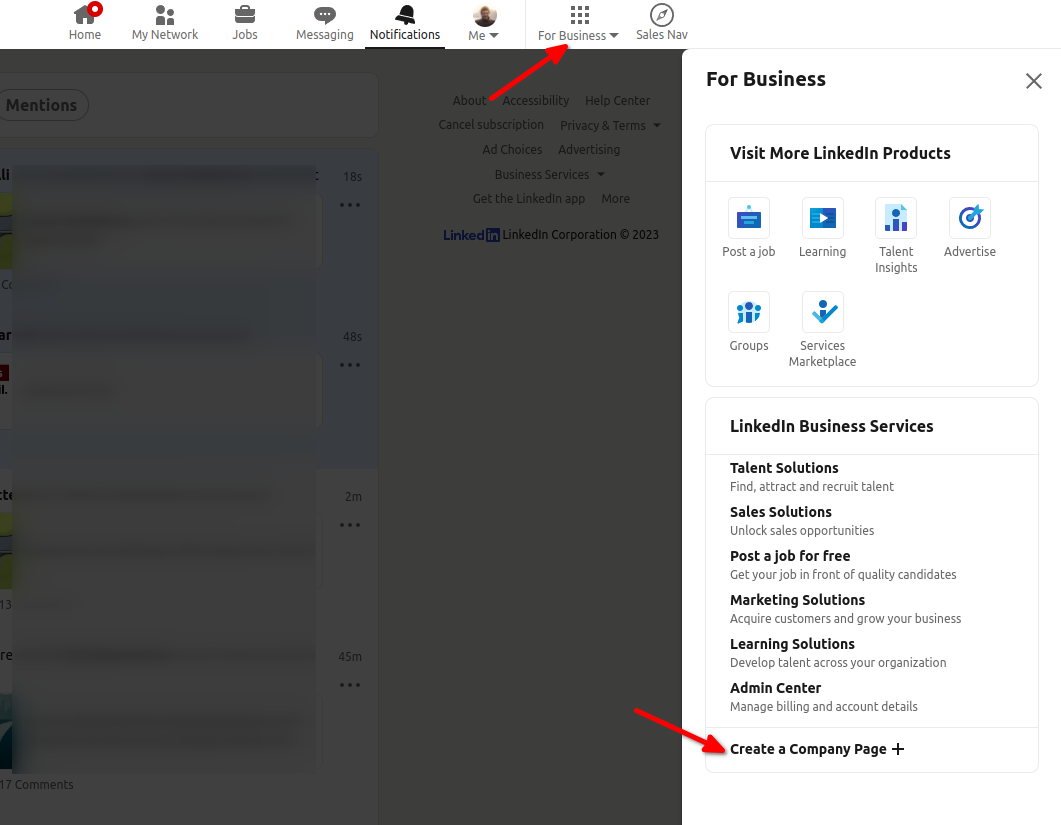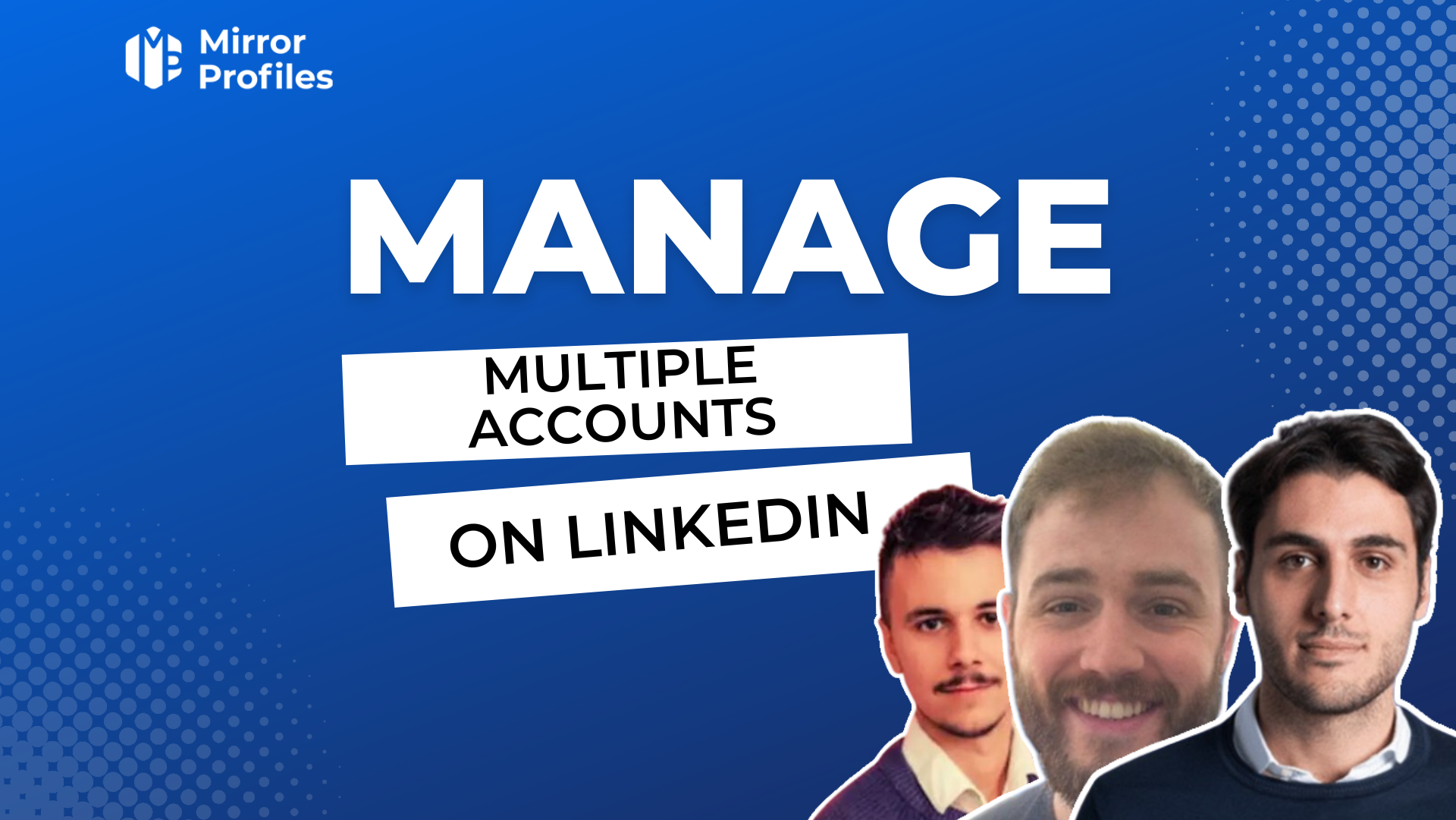Managing multiple LinkedIn profiles can feel like a daunting task, especially when you want to maintain a professional image without getting tangled in a web of confusion. Whether you’re a freelancer juggling various gigs or a business owner representing multiple companies, a strategic approach to your LinkedIn presence is essential. This blog post will guide you through best practices, helping you navigate the murky waters of multiple profiles, while keeping in tune with
Understanding LinkedIn's Policy on Multiple Accounts

Before diving into the how-tos of managing multiple LinkedIn profiles, it's crucial to understand LinkedIn's policies regarding account creation.
- One Personal Profile: Each person is permitted to create and maintain only one personal account. This means no duplications!
- Company Pages vs. Profiles: If you're representing multiple businesses, you should create separate Company Pages. These pages can be linked to your personal account.
- Not For Gaming: Creating multiple profiles to game the system or mislead other users is against professional etiquette and could lead to account suspension.
- Content Ownership: Remember, all your profile content belongs to your single account. Spreading yourself across multiple profiles dilutes your personal brand.
In short, *LinkedIn is not the place for multiple personal accounts*. Keeping within these guidelines not only ensures you adhere to the platform's rules but also helps you maintain a consistent and cohesive professional image. If you find yourself in a position where you have multiple profiles, it’s advisable to merge them or delete the extra accounts to focus on a single, robust presence.
Reasons for Having Multiple LinkedIn Accounts

Having multiple LinkedIn accounts can be a useful strategy for various professionals in today’s digital age. Here are some compelling reasons why individuals might consider maintaining more than one profile:
- Different Career Focus: If you have diverse interests or work in multiple fields, creating separate profiles can help tailor your experience and skills to each industry. For instance, if you’re a freelance graphic designer and also work as a marketing consultant, having distinct profiles can effectively highlight your expertise in each role.
- Networking with Different Audiences: Certain industries have unique networks. By creating separate accounts, you can connect with industry-specific professionals, enhancing your chances of finding targeted job opportunities or collaborations.
- Personal Branding: Different profiles allow for a more focused personal brand. You can create a professional image that distinctly appeals to your target audience, whether they are potential employers, clients, or collaborators.
- Experimentation with Content: Having multiple accounts enables you to experiment with different types of content and engagement strategies. You can analyze what works best in one profile and apply these insights to the others without risking your main professional image.
- Privacy and Anonymity: If you're exploring new opportunities or industries without wanting to alert your current employer, a separate profile can provide a layer of privacy while you network discreetly.
How to Effectively Manage Multiple Profiles
Managing multiple LinkedIn profiles can seem overwhelming, but with the right strategies, it can be a breeze. Here’s how to effectively juggle your accounts:
- Use Different Email Addresses: Start by creating accounts with separate email addresses. This will help keep notifications organized and make it easier to manage each profile based on its focus.
- Set Clear Objectives: Define what each profile should achieve. Are you showcasing freelance work, looking for full-time opportunities, or network building in a specific industry? Knowing your goals for each account will guide how you utilize them.
- Regularly Update Profiles: Just like you would with one profile, ensure all your accounts remain current. Schedule a monthly check-in to update experiences, skills, and accomplishments, making your profiles relevant.
- Strategize Content Sharing: Plan and schedule content that aligns with each profile’s focus. Tools like Buffer or Hootsuite can help you manage posts efficiently without overwhelming you.
- Engage With Purpose: Take the time to connect with the right people based on each profile’s objective. Personalize connection requests and messages — this adds a personal touch and highlights your intention.
- Use Analytics Tools: Leverage LinkedIn’s analytics or third-party tools to track engagement and connections per profile. This data can inform your strategies for future growth.
By following these steps, maintaining multiple LinkedIn profiles can be not only manageable but also incredibly beneficial for your professional journey!
Best Practices for Networking with Two Accounts
Managing multiple LinkedIn accounts can be a balancing act, but with the right strategies, you can effectively network without confusion or burnout. Here are some best practices to keep in mind:
- Define Your Purpose: Each account should have a clear purpose. Whether it's to showcase your personal brand or to highlight a different professional focus, knowing the goal helps you tailor content and connections.
- Segment Your Audience: Identify the target audience for each profile. For example, your primary account might focus on networking with industry peers, while the secondary profile could target clients or potential collaborators.
- Content Planning: Create a content calendar for both accounts. This ensures consistent engagement without overlapping posts. Diversify your content by sharing articles, insights, and personal stories relevant to each audience.
- Custom Connection Requests: When sending connection requests, personalize your message based on the account’s focus. A tailored message can increase acceptance rates and build stronger relationships.
- Engage Separately: Make sure to actively engage on both accounts. Comment on posts, share articles, and participate in discussions relevant to each profile's audience. This not only boosts visibility but also showcases your expertise.
- Monitor Your Activity: Regularly review the performance of each account. LinkedIn provides insights into profile views and engagement—use this data to refine your approach.
By implementing these best practices, you can create a seamless and productive networking experience on both LinkedIn profiles. Just remember, clarity of purpose and consistent engagement are key!
Conclusion
Managing multiple LinkedIn profiles doesn't have to be overwhelming. In fact, with a structured approach, you can turn it into a beneficial strategy. This way, you can navigate your professional life more effectively, leveraging both profiles to showcase your diverse skills and interests.
As we've discussed:
- Having a clear purpose for each account allows you to tailor your networking efforts.
- Segmenting your audience ensures you're connecting with the right people.
- Engaging with unique content keeps both profiles active and valuable.
Just remember to remain authentic in all your interactions. Genuine connections are what ultimately lead to valuable networking opportunities. So, whether you’re navigating job changes, transitioning careers, or simply expanding your network, having two LinkedIn accounts can serve as a valuable tool in your professional toolbox. With the right practices in place, you’ll find that networking on multiple accounts can enrich your professional life rather than complicate it. Happy networking!










